6 essentials for your travel toolkit
Don’t let the fall colors scare you into pickling your car for winter just yet. In many parts of the country, this is the best time to be out on the road. Color tours are spooling up all over the northeast, and as the temps drop in the southwest, vintage cars are returning to the roads—but that means more than a few will likely end up on the roadside too. Set yourself up for success and pack a toolkit to at least handle the basics.
Of course, for bigger trips or questionable cars, it makes sense to pack a big kit that could cover just about everything, but that is not right for every person or situation. As the old saying goes, the best time to build a toolkit for your vintage ride was yesterday and the second best time is right now. Even if you aren’t handy or do your own maintenance it is never known who might stop and offer help and without tools that good Samaritan is reduced to good thoughts. Here are six basic essentials for your travel toolkit.
Screwdrivers

Much of any car is assembled with slotted and Phillips-head screws, and even a precursory inspection often requires removing an access panel or cover. Sometimes a noise or vibration does not indicate immediate death for your car or engine, and after inspection you can determine if it is safe to carry on your way despite some part or piece misbehaving. A screwdriver can also act as a stethoscope in a pinch too, allowing you to track down a goofy noise for better diagnostics with less disassembly.
Pliers
Whether you need to deal with a stubborn spring hose clamp or moving a piece that got a little hot, pliers are the tool for the job. At bare minimum you should carry needle nose and slip joint pliers, as these will cover the vast majority of tasks on the roadside. Bonus points if your needle nose pliers have a cutting edge, as this will work for wiring repairs or stripping.
Fluids
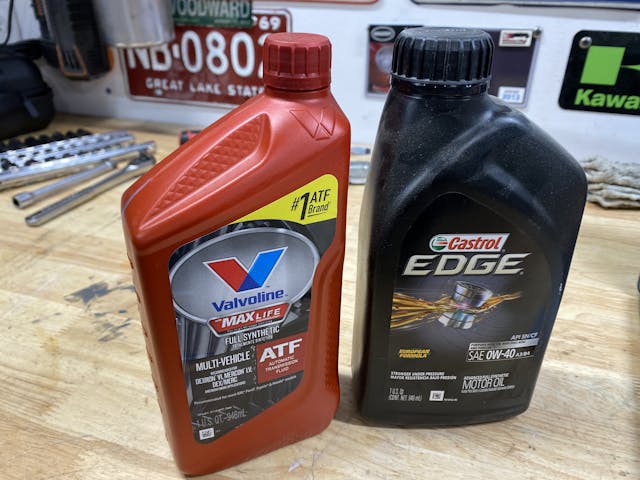
We can’t live without water, and your engine can’t live without oil and coolant. They’re the fluids you’re most likely to lose and can still safely refill and continue your drive. Some folks will tell you to carry brake fluid, but if you’re losing brake fluid, that’s not something to top off and continue. Your brakes are a critical safety system that should be repaired properly by a pro, and your Hagerty roadside assistance card is going to be the best tool to use if the brake reservoir runs out while on the road.
Belts
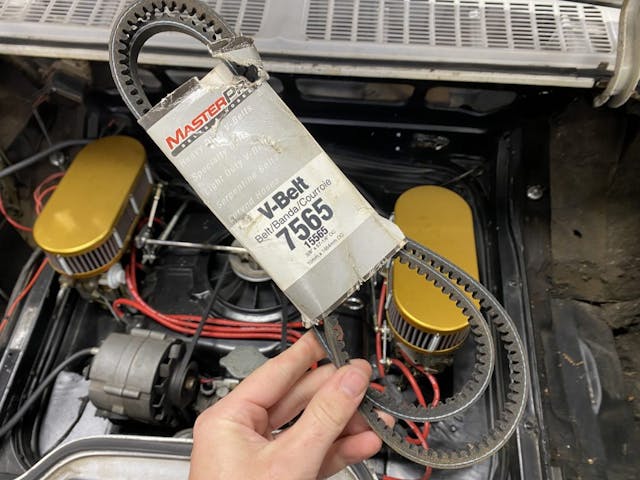
Most vintage engines run simple V-belt setups, but that system has been usurped by the serpentine belt. Relying on a chain parts store to have a variety of V-belts can be a big ask since they likely don’t sell many and thus only stock the most popular sizes. Belts are light and pack down small, so having the proper belts for your car is a no brainer.
Jump pack
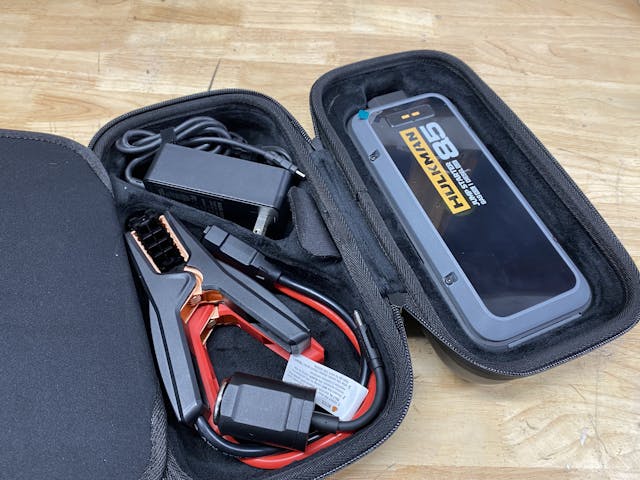
Batteries go flat. It just happens sometimes, especially on vintage electrical systems in which small draws can go unnoticed until its too late. A jump pack can provide the juice to get your engine running again or keep it running in a real pinch. Also, most jump packs these days are small and light, while also packing more punch than ever. A bonus is it allows you to charge your phone or other critical accessories if you find yourself stranded and waiting for a tow.
Sockets and wrenches
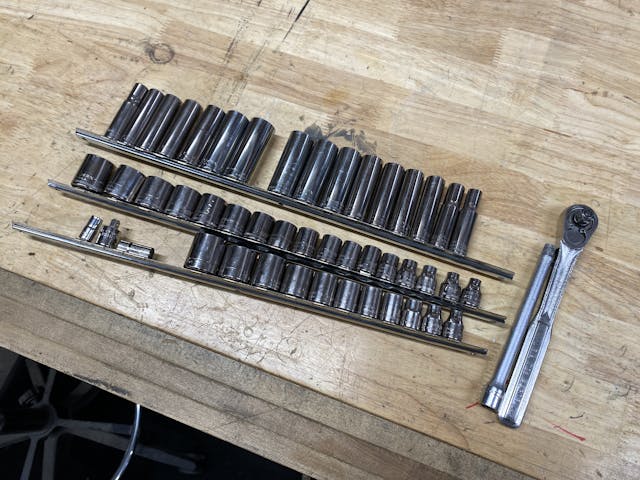
Yeah, duh. It’s hard to take anything apart or service pieces without the ability to remove nuts and bolts. If you are handy and want to carry the bare minimum, start by looking under the hood and picking just the wrenches and sockets for jobs you are willing to do on the roadside. If in doubt, grab a full set of shallow and deep sockets for both SAE and metric, because you never know what hack might be hiding under the hood where someone previously mixed hardware. This also gives you the chance to be the hero in someone else’s story when you have the socket they need in order to leave the car show.
Bonus: Tool roll

Personally, I hate random things rolling around my car, doubly so if they make noise. A simple tool roll is cheap and allows you to keep all your trip-saving bits and pieces together. Tuck it all under a seat or in back with the spare tire, and rest easy each time you take the car out knowing that you’ve got at least the bare minimum needed to keep your trip on the road rather than the shoulder.
Is there something you’d add to a super basic toolkit? Leave your suggestion in the comments below.
Check out the Hagerty Media homepage so you don’t miss a single story, or better yet, bookmark it.

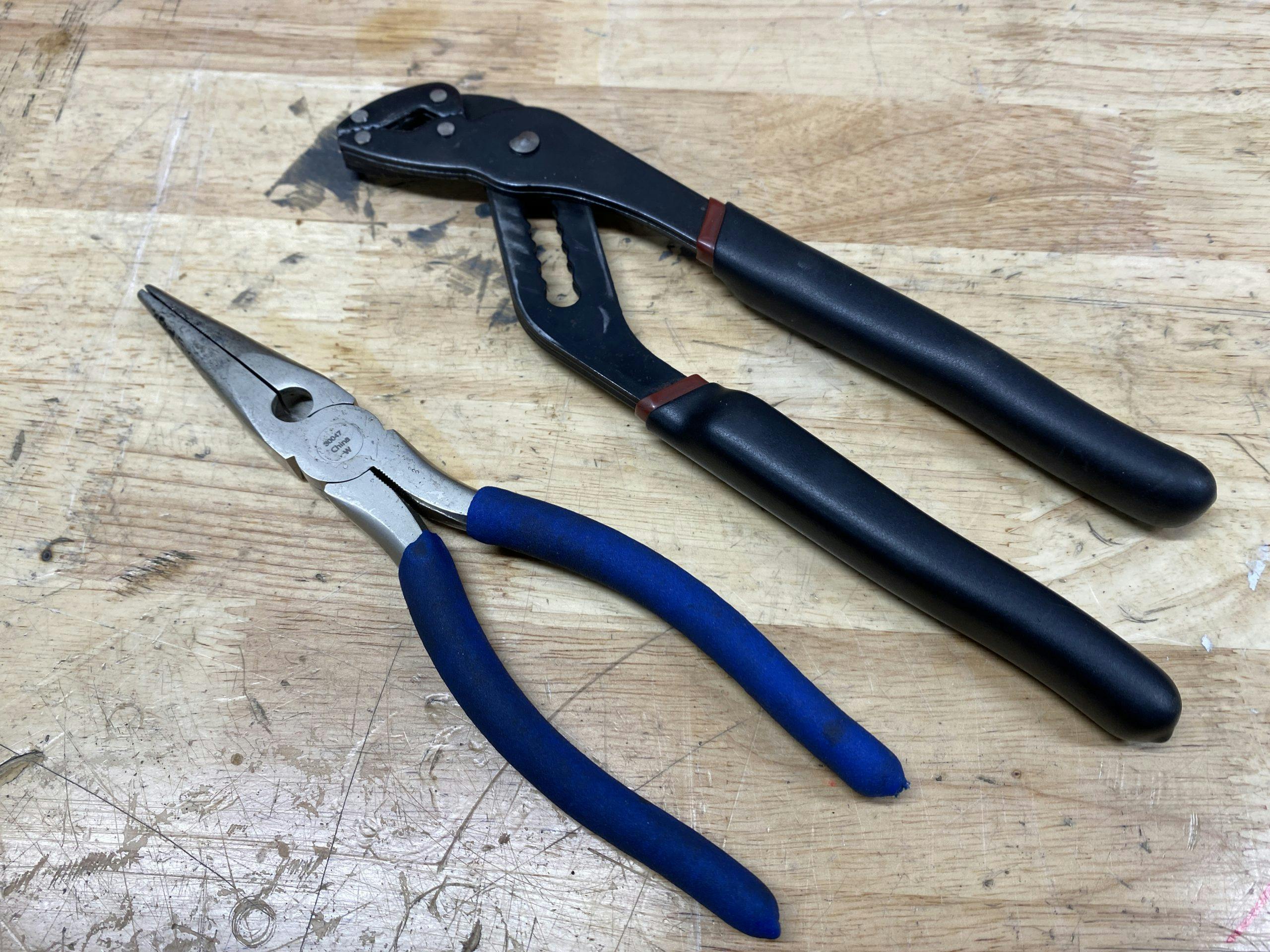



I would add a fire extinguisher. When you’re driving a classic, you don’t always know the condition of the wiring and rubber fuel lines unless you have replaced them. Old wiring insulation can be brittle, crack, and cause a short. Old rubber fuel lines can crack and drip gas onto a hot engine, possibly causing a fire.
I take duct tape and wrap it around the handle of my hammer, over and over about ¼ to ½” thick. This way you don’t have to carry a full roll, but have enough tape for an emergency.
To DUB6: As a long time Corvair owner/driver/shop owner most place the spare in the front since there is already plenty of weight in the rear of the car. Second in this case due to the air cleaners there is no room for the spare to fit on the bracket.
Test light
I always include a test meter, and some fuses and bulbs, especially any oddball ones that might be difficult to source away from town
Duct tape, WD-40, multi-tip screwdriver, water-pump pliers, knife, hammer, flashlight, and AAA card… If it is not supposed to move, tape it; if it is stuck, spray it; if that doesn’t work, hit it.
Some files. Small and large. Sometimes you gotta make things fit.
The collection mentioned is fine for older/vintage autos. These days torx (internal and external) fasteners are common and fuel injection complicates things since at least 2000. A cell phone, flashlight, battery jump box and a tow strap are always useful as well as any hand tools that you can use on the battery connections and primary wiring. Some hand cleaner, a towel and a pair of work gloves can also be desirable. Having a useable spare tire and the means to install it is still prudent including a lug nut lock adapter if needed.
how about a fuel filter
I carry most of the items listed, but I drive old British sports cars, and our road trips can be quite lengthy, so I also tuck a few spare parts in and around my spare tire – clutch master and slave cylinders, a selection of small nuts and bolts and bulbs, connectors and wire. Have even carried a spare starter!
Go to Harbour Freight and get one of those moving blankets. Great if you have to crawl under or to kneel on.
A point file and 12 (or 6) volt test lamp are essential tools for any vintage car with stock ignition.